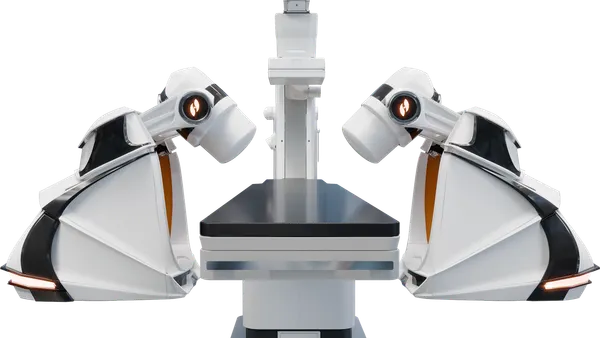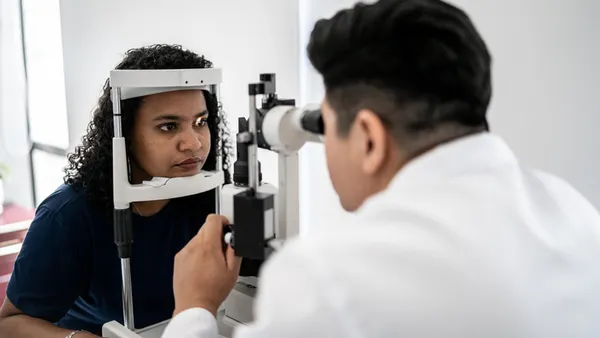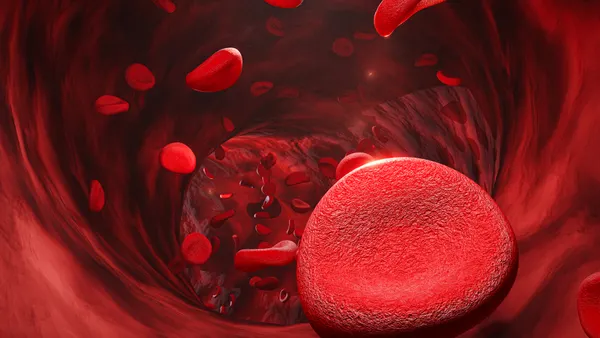Dive Brief:
- FDA's Neurological Devices Panel is set to review an application for Neuronix' transcranial magnetic stimulation (TMS) device to treat Alzheimer’s disease on Thursday.
- Primary results of the company’s 106-patient pivotal study did not demonstrate device effectiveness, FDA said in documents released ahead of the meeting, where the agency also cast doubt on the company's post-hoc analysis assessing the device.
- The expert advisers will weigh device safety and effectiveness, the clinically meaningful benefit for an adjunctive Alzheimer’s therapy, and the overall benefit-risk ratio of the device.
Dive Insight:
The noninvasive treatment, which has a CE mark in Europe, aims to slow the progression of Alzheimer’s using TMS to stimulate areas of the brain responsible for memory and learning. The patient participates at the same time in cognitive training exercises on a computer touch screen intended to work concurrently to help restore brain function.
Treatment with the Neuronix device, called neuroAD, consists of five daily one-hour sessions per week for six weeks. According to the company, TMS reactivates long-term potentiation, the primary cellular mechanism responsible for memory and cognitive functions, strengthening chemical bonds between the neurons.
Patients receiving the treatment saw improvement on the Alzheimer’s Disease Assessment Scale cognitive subscale, according to information on the Israel-based company's website. Negative numbers indicate improvement on the scale.
However, there is a “high level of uncertainty” in the methodology and conclusions drawn from the pivotal study subgroup post-hoc analyses and the post-hoc analyses using pooled clinical data in assessing the device, FDA said in its summary released before the panel meeting.
Given that the primary results of the pivotal study did not demonstrate device effectiveness, the post-hoc analyses are being used to form the basis for the company’s conclusion of device effectiveness, the agency noted.
Risks associated with the neuroAD device appear to be low, FDA said. There were no device-related serious adverse events, but a higher number of events occurred in the treatment group than in the sham group.
Mild device-related adverse events were experienced by 14% of patients in the pivotal study and included headache, neck pain, skin discomfort and muscle twitching, the agency said. Potential risks noted from supplemental studies included psychiatric symptoms that required medication, mild hearing impairment, blurry vision, eye pain, neck pain, mild scalp pain, achiness, fatigue, nausea, mild to moderate headaches and anxiety. FDA said data from the supplemental studies was incomplete.
The advisory panel will be asked to make recommendations on:
1) whether the U.S. pivotal study demonstrates a clinically meaningful benefit for the device as an adjunctive therapy,
2) what minimum amount of improvement in ADAS-Cog is clinically meaningful, and what is the minimum amount of clinically meaningful improvement in the Clinical Global Impression change scale,
3) whether the ADAS-Cog ≤30 population is a clinically plausible subset,
4) whether the post-hoc identification of the ADAS-Cog ≤30 population at a later time when no treatment is given is an adequate analysis of the pivotal study data, in connection with the supplemental data provided, to demonstrate probable benefit,
5) whether the probable benefits to health outweigh the probable risks, and
6) whether the proposed indications for use are supported by the data collected in the clinical studies. This includes interpretation of the primary endpoint of the pivotal study that demonstrated non-statistically significant improvements in the sham group compared to the neuroAD treatment group, the secondary endpoint assessments of the pivotal study, post-hoc analysis of the pivotal study, and analyses of supplemental data sets.
The FDA is not required to take the advice of its expert panels, but typically does.
Currently there is no cure or treatment that can slow the progression of neuro-degeneration in Alzheimer’s patients. The disease affects 5.7 million Americans and is the sixth leading cause of death among adults, according to the Centers for Disease Control and Prevention.










